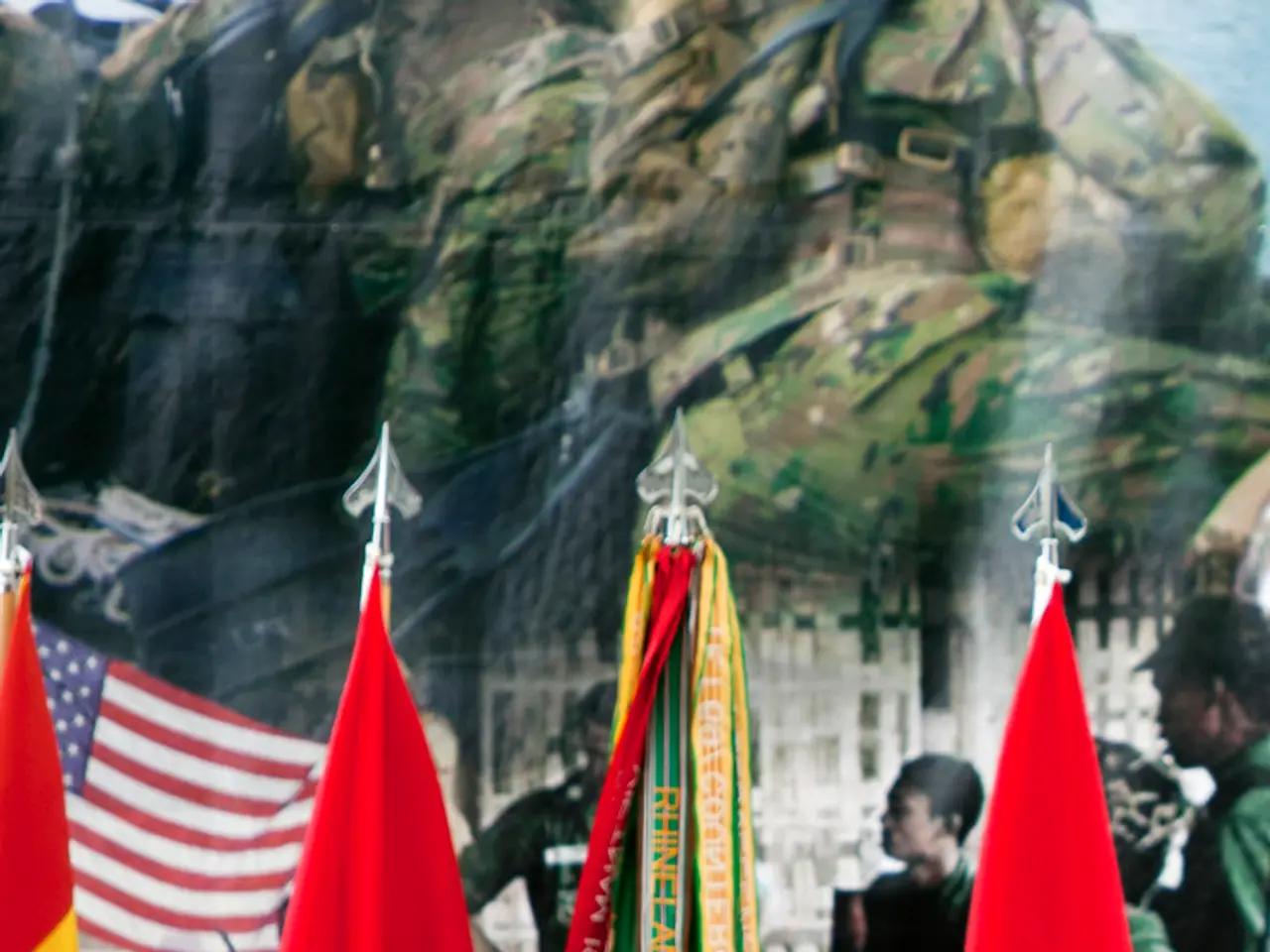Unveiled on May 21, 1945: The enigma of Stan Valancius' identity
GIs Mock Nazi Leaders in Post-War Germany and Austria: The Story of Private First Class Stan Valancius
After the defeat of Nazi Germany in May 1945, American soldiers, including members of the 41st Infantry Division, nicknamed the "Cactus Division," occupied various parts of Germany and Austria. In this period of transition, soldiers expressed their disdain for the defeated Nazi regime through humor, satire, and mocking gestures aimed at Nazi leaders.
One such example is the photograph of Private First Class Stan Valancius, a member of the 41st Infantry Division, documented in Innsbruck, Austria in 1945. The portrait, part of a collection of approximately 150 photographs from Valancius' unit, shows him in uniform, engaging in some form of symbolic mocking or parody related to the Nazi leadership.
The practice of mocking Nazi leaders in uniform was widespread among GIs, including those in the Cactus Division in Tyrol. Soldiers sometimes dressed up in Wehrmacht uniforms and posed with the Hitler salute or in poses from Hitler parodies in films. This behavior had multiple motivations: it was humorous relief after hard combat, a cathartic expression of relief and victory, and a clear expression of repudiation of Nazi ideology.
Such mockery also served as informal psychological warfare aimed at reassuring local populations that the Nazis were defeated and discredited. The laughter about Hitler and the Nazis became scarce, but ended for many GIs in the spring of 1945 with the invasion of Germany and the impending victory over the Germans.
The photo of Pfc. Valancius reflects the broader trend of GI humor and symbolic gestures in occupied Austria. Innsbruck, being a significant city in Tyrol, Austria, was under Allied occupation post-war, where soldiers encountered the remnants of Nazi power and often engaged in acts that underscored the regime’s defeat.
The original caption for the photograph read: "Nuremberg, 1945. T/4 Harold L. Hershey, with the aid of a comb, mocks Hitler from the orators' box in the famous Nazi Party Congress Stadium where the Führer once harangued Nazi crowds." The Signal Corps photographers, including Hershey, adopted a practice of mimicking Hitler that was widespread among GIs.
The mimicking of Hitler was popular among GIs, and the photo was published on Hitler's birthday. The back of the print is inscribed with the question, "Stan Valancius... or is it?" Travesty, or mocking the Nazis, was a popular form among GIs during this time. This act of mockery reflects the psychological transition from a brutal conflict to a complex postwar process of occupation, de-Nazification, and rebuilding.
These acts of mockery reveal how ordinary soldiers coped with the trauma of war and contributed to historic memory by capturing moments of informal resistance to Nazi ideology. They help illuminate the lived experience of occupation forces and represent a form of cultural resistance to totalitarianism. For more precise details about the photograph of Pfc. Stan Valancius or specific activities of the 41st Infantry Division in Austria, primary sources such as military archives, veteran memoirs, or WWII occupation records could provide deeper insights.
The mocking gestures and parodies aimed at Nazi leaders, such as the one demonstrated by Private First Class Stan Valancius in his photograph from Innsbruck, were not only humorous relief for GIs but also an informal resistance to Nazi ideology. This act of travesty, published on Hitler's birthday, became part of the historical record, contributing to the documentation of cultural resistance to totalitarianism during the post-war occupation.
In the transition period following the defeat of Nazi Germany, entertainment and humor in the form of mocking gestures towards Nazis served as both psychological relief and a clear expression of victory for GIs, including those in the Cactus Division in Tyrol, Austria. These acts, a part of the lived experience of occupation forces, help illuminate the complexity of the post-war process.








